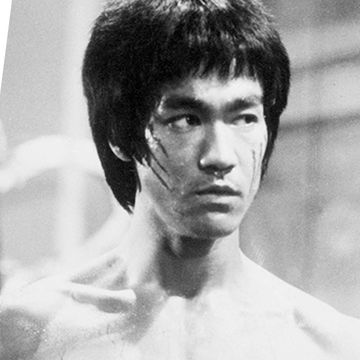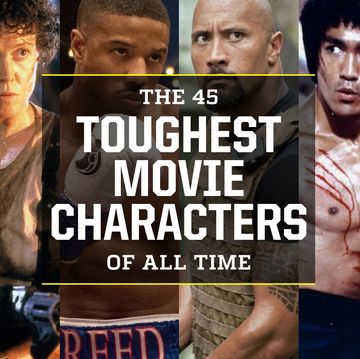The military conspiracy-thriller Green Zone, a policy debate masquerading as an action movie, has a premise that invites scrutiny. The central idea—that warmongering civilian planners knowingly lied about weapons of mass destruction (WMD) as a reason to invade Iraq in 2003—is challenging enough. But the filmmakers then have their nefarious civilians engage in a cover up and, while they're at it, willingly make moves that will directly lead to Iraq's Sunni insurgency. That civilians cooked WMD intel is just one of the movie's assertions that beg to be questioned.
Whose intelligence was at fault in Iraq?
The movie traces the source of bogus WMD claims to a single source—an Iraqi general who secretly worked with civilian staff at the Bush-era Pentagon. Of course, this source is given a code name, which along with damning details about WMD, is promptly leaked to a prominent U.S. newspaper in the movie. But in reality, U.S. intelligence was not the primary source for the argument that Iraq had weapons of mass destruction—the CIA was largely the conduit for intelligence coming out of the United Nations.
In the authoritative book Cobra II: The Inside Story of the Invasion and Occupation of Iraq, authors Michael Gordon (a New York Times reporter) and retired Marine Corps Gen. Bernard Trainor state that the CIA—the agency that is supposed to tackle such questions—was not heavily involved in finding Iraqi WMD. "The CIA had become so used to relying on the U.N. for reporting on WMD that it was accustomed to doing without spies in Iraq's weapons programs," the authors assert. After Saddam Hussein kicked out the inspectors in 1998, the CIA "was forced to develop its assessments based on satellite photographs, the occasional defector and extrapolation from past experiences. As the quality of the information declined, its fears grew." Conspiracy hunters take note: All of this occurred during the Clinton administration.
In the real story, international intelligence agencies were not much help, either. German agents interviewed a defector—code named Curve Ball—who claimed Saddam had created mobile labs to cook up biological weapons. By 2000, the Clinton White House and nearly all national intelligence agencies assumed that Iraq had WMDs; one estimate released during Clinton's last year in office claimed a stockpile of 100 tons of mustard gas and sarin nerve agents. The Bush administration, assured by the CIA that weapons would be found, did not pursue an updated view or the corroboration of Iraqi WMD. No one can argue that placing such a flimsy rationale at the center of a war debate was anything but reckless—but the movie posits premeditated tampering, not a lack of wisdom, from the Bush administration.
As for the Defense Department, its pre-invasion military intelligence was well-focused on air defense systems, at that time aiming at U.S. warplanes patrolling the no-fly zone. It deserves mention that the movie's take on the CIA, personified by a character played by Brendan Gleeson, is that the organization was shrewd and had made sharp observations. The truth is the opposite; the CIA was dependent on United Nations to collect intelligence on WMD.
It's also worth pointing out that many of Saddam Hussien's generals were convinced that his regime was holding weapons of mass destruction. Of course, he had an active weapons program, and used them on his own people as well as the Iranian military. But that program ended in the 1990s. Afterward, Saddam relied on a policyof "deterrence by doubt" that was crafted to keep international foes and Iraqis alike guessing. Only his sons and a few aides knew the truth, and when he told his generals in December 2002 that there was no WMD held in reserve to repel an invasion, the morale among his commanders plummeted, according to Cobra II. Saddam never allowed U.N. arms inspectors to interview scientists who could have testified that work had been halted, and Iraq's declarations to the U.N. describing destroyed toxins and agents was filled with flaws. By the time Saddam ordered the sites where weapons were once manufactured scrubbed clean of evidence, at the end of 2002, it was too late. His deterrence strategy backfired.
Who created the lists of WMD sites?
The movie maintains that the intelligence used by U.S. troops came from top-down, classified sources that identified a handful of bogus sites that turn out to be playgrounds and such. The truth is more disturbing, from the standpoint of intelligence trade craft.
The task of finding WMDs fell into the lap of the U.S. military, which in late 2002 had plenty of other jobs on its mind, like planning the "shock and awe" campaign and concurrent invasion. Cobra II describes officers crafting a list of 946 sites where weapons were believed to be made or stored. Some of the intel was several years old. The senior intelligence officer, Maj. General James Marks, trimmed the list to 130 sites, and created a team from an artillery unit to become a WMD hunting task force. Since the civilian intelligence officials who gave Marks the information never prioritized the list, his task force soldiers decided to raid sites that matched the route of the invasion. Even worse, the force only had a month to train and gather intelligence before the shooting began. Some say this lack of preparation is an indication that the Bush administration did not think WMD would be found, but it's more plausible that incompetence, not conspiracy, is to blame.
Was the Iraqi Army a vaccine that could have prevented the insurgency?
The movie bluntly positions the Iraqi Army as "the only thing that can keep this country together." It depicts senior Iraqi Army staff literally waiting for the phone to ring so it can partner with the U.S. to run Iraq. It also shows the Iraqi Army watching a press conference announcing their dissolution—immediately afterwards the staff begins loading AK-47s, ready to get the insurgency going.
Here, the movie scores points. "Disbanding the Iraqi army certainly did send a large number of men into the ranks of the unemployed and made them—and their expertise—available to the insurgency," says Nathan Hughes, a military analyst with the global intelligence company STRATFOR. "Before the army was disbanded, many officers were waiting to see what the future would hold; they may well have been the heart of the nascent insurgency."
Whose idea was it to boot the Ba'ath out of civil service?
The Arab Socialist Ba'ath Party has been banned from Iraqi politics, and the movie argues that this move was done at the insistence of clueless U.S. officials. But the move was likely necessary to keep Kurds and Shia on board with the new Iraqi government.
The Coalition Provisional Authority's original Ba'ath ban, issued in May 2003, only banned the top four ranks of the Baath Party from public-sector jobs, but Iraqis eagerly spread the idea to universities and mid-level public sector positions. Joining the Ba'ath party had been mandatory for university attendance, so it became hard to find qualified pubic servants to run Iraqi infrastructure. There's little doubt that the de-Ba'athification helped create a power vacuum that destabilized Iraq.
As Iraqis this week tally votes from the first election not boycotted by any (allowed) political parties, the Ba'athist question remains a key issue. Then again, despite the intervening decades, a similar struggle to balance free speech with fear of Nazism in Germany has not been resolved. It's interesting that the movie Inglorious Basterds, with its overtly bloody message that some political affiliations can never be forgiven by time or circumstance, was nominated for an Oscar the same week that Green Zone was released, with its opposite argument that geopolitical realities supersede such moralism? Who says there's no intellectual diversity in Hollywood?
Joe Pappalardo is a contributing writer at Popular Mechanics and author of the new book, Spaceport Earth: The Reinvention of Spaceflight.












